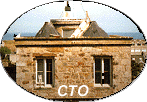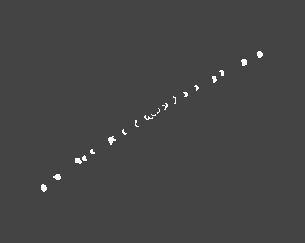History of the Cromwell Tower

|
History of the Cromwell Tower |
|
Cromwell Tower was officially founded on the 7th of April 1658, and building work was completed around 1662. It was originally used to accommodate students and a Periodicals Room, but in the latter part of the eighteenth century students were no longer required to stay within the College. By 1804 the tower had been vacated by students and some of the original rooms had been converted to classrooms. The uses of the converted Tower are described by Donald Sage (Memorabilia Domestic, Chapter X, page 190), who says "the observatory tower contained on the ground floor, the Greek classroom, and above it was the divinity hall. In the third flat were apartments for one of the professors, on the top of all was the observatory, or astronomical room.".
The astronomical room was developed into a working observatory in the mid 1860s by Professor David ("Davie") Thomson, who at that time held the Chair of Natural Philosophy. David Thomson was encouraged by David Gill to use the observatory to bring accurate time to Aberdeen. Gill was a clock maker who provided an electrical clock in the observatory that was regulated from stellar observations. This clock sent impulses to the turret clocks in Kings and Marischal Colleges, and to the public clock in Gill's shop in Union Street. By this means, accurate time was brought to Aberdeen before it was available in most other cities. Gill went on to make a career for himself in astronomy, becoming in due course Astronomer Royal at the Cape of Good Hope where he established himself as one of the leading 19th century observational astronomers.David Thomson also made the observatory into part of the first national meteorological network in Britain, at the end of the 1860s. In 1870, a thermometer screen was placed on the north side of the tower, 41 feet above ground, to measure maximum and minimum temperatures. Other recording instruments were installed, including the Robinson cup anemometor that still whirls outside to this day. The meterological observatory remained in use by the University until 1921 when it was taken over by the Air Ministry and used as a training ground for future meteorologists. Research into the upper atmosphere was conducted from shortly after the First World War until December 1947, when the observatory was closed down. For much of the first half of the 20th century, George Aubourne Clark was the meteorological observer. He made a speciality of cloud photography and his pictures were used the world over as the archetypes for different kinds of clouds. There is a room in the library named after him.
|
|
 |
It took a combination of research and inspiration to deduce that this photograph (above left) was shot at about 7.45 am on Wednesday 29th June 1927. Beside the long-focus bellows camera is George Aubourne Clarke FRPS, Aberdeen's brilliant cloud photographer; at the table adjusting the silver-disk pyreheliometer, Owen F.T.Roberts, lecturer in astronomy, assisted at the clock by a youthful Charles Strachan, whose association with our university covered almost seventy years . They have just observed the first total eclipse of the sun (above right - what was seen) that happened in the 20th century where totality could be seen from some parts of mainland Britain.
From the 1970's to the 1990's Michael Gadsen used the Cromwell tower for noctilucent cloud observations and, in the earlier years , for auroral photography. The accompanying picture shows apparatus of the National Physical Laboratory that was installed in the observatory for two winters in 1995/1997 to monitor greenhouse gas IR absorption.

A map of the University of Aberdeen campus with a list of all the buildings, linking to information about the departments contained within them.
Aberdeen University has a prestigious collection of historical objects, each of which has played a part in the education of students of Natural Philosophy over the past 250 years. The Natural Philosophy Collection of Historical Scientific Instruments is curated by John Reid.
|
Observatory |
Homepage |